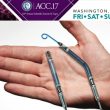Despite the fact that some randomized studies and meta-analyzis have suggested prolonged dual antiaggregation could be associated to increased death rate, the underlying mechanism remains unclear. It is only logical to assume that if there was an actual increase in mortality associated to prolonged antiaggregation, this should be due to bleeding; however, no studies have<a href="https://solaci.org/en/2017/05/05/dual-antiaggregation-time-and-death-by-bleeding/" title="Read more" >...</a>
Primary angioplasty and multivessel lesions: how should we proceed?
Courtesy of Dr Carlos Fava. The association of primary angioplasty with multivessel lesions is not infrequent and has been analyzed in various studies and meta-analyses. However, the proper course of action remains unclear. According to this study, fractional flow reserve (FFR) could better define the ischemic impact of lesions and help with the identification of<a href="https://solaci.org/en/2017/05/04/primary-angioplasty-and-multivessel-lesions-how-should-we-proceed/" title="Read more" >...</a>
2nd Edition Multi-Level CTO course 2017
The 2nd Edition of the international Multi-level CTO Course which will be held in Nice (France) from June 29th to July 1st, 2017 at Palais de la Méditerranée. Following the success of the 2016 first edition (336 attendees over 40 countries), the main goal of this event is to bring together all passionate operators<a href="https://solaci.org/en/2017/05/03/2nd-edition-multi-level-cto-course-2017/" title="Read more" >...</a>
TAVR in Intermediate-Risk Patients: Is It as Effective as Surgical Aortic Valve Replacement?
Courtesy of Dr. Carlos Fava. Transcatheter aortic valve replacement (TAVR) has proven to be beneficial for extreme- and high-risk patients. It is also increasingly used in intermediate-risk patients, and it has been hinted at for low-risk patients. However, different sectors in the medical community still challenge the existence of real TAVR benefit. This assessment consisted<a href="https://solaci.org/en/2017/05/03/tavr-in-intermediate-risk-patients-is-it-as-effective-as-surgical-aortic-valve-replacement/" title="Read more" >...</a>
Is it safe to perform percutaneous treatment in acute pulmonary thrombosis?
Courtesy of Dr. Carlos Fava Massive and submassive pulmonary embolism (PE) has traditionally been treated with anticoagulation and catheter direct thrombolysis (CDT), but the safety and efficacy of this treatment has not been yet properly assessed. The study analyzed 137 patients presenting acute PE massive or submassive. All patients received CTD associated to heparin<a href="https://solaci.org/en/2017/05/01/is-it-safe-to-perform-percutaneous-treatment-in-acute-pulmonary-thrombosis/" title="Read more" >...</a>
Post TAVR thrombosis, is it more common than we know?
Courtesy of Dr. Carlos Fava Few post TAVR scenarios remain to be analyzed. One of them is post TAVR valve thrombosis. This event has been reported in around 0.5% of cases, but its incidence, consequences and adequate treatment remain unclear. The study analyzed 642 patients undergoing TAVR. Patients were followed up with Doppler Echocardiography<a href="https://solaci.org/en/2017/04/25/post-tavr-thrombosis-is-it-more-common-than-we-know/" title="Read more" >...</a>
Diastolic Dysfunction: Shall We Begin to Assess It?
Courtesy of Dr. Carlos Fava. The association between diastolic dysfunction (DD) and aortic insufficiency (AI) after transcatheter aortic valve replacement (TAVR) has not been studied yet, but the presence of aortic regurgitation has proved to be associated with worse outcomes. A total of 144 out of 195 patients who underwent TAVR with balloon-expandable SAPIENS or SAPIENS XT<a href="https://solaci.org/en/2017/04/19/diastolic-dysfunction-shall-we-begin-to-assess-it/" title="Read more" >...</a>
Catheter-directed thrombolysis for pulmonary embolism: a safe technique
Courtesy of Dr. Brian Nazareth Donato. The conventional treatment for patients with pulmonary embolism (PE) has traditionally been anticoagulation plus systemic thrombolytics, or surgical embolectomy, reserved for high risk patients. Even though it has been shown systemic thrombolytics reduce mortality in PE patients at high or intermediate risk, its use has been limited given the<a href="https://solaci.org/en/2017/04/18/catheter-directed-thrombolysis-for-pulmonary-embolism-a-safe-technique/" title="Read more" >...</a>
Infarction in Cariogenic Shock: Prioritizing the Use of Impella Could Improve Survival
This small study suggests the early use of Impella ventricular support device in patients undergoing AMI complicated by cardiogenic shock could help lower mortality rate in this population. However, study design should moderate our enthusiasm, mainly because of the cost of this device. Detroit Cardiogenic Shock Initiative has stressed early identification of cardiogenic<a href="https://solaci.org/en/2017/04/11/infarction-in-cariogenic-shock-prioritizing-the-use-of-impella-could-improve-survival/" title="Read more" >...</a>
DECISION-CTO: Prevailing Questions on CTO Rechanneling
The first and only randomized trial on chronic total occlusion (CTO) revascularization versus optimal medical therapy in stable patients has disappointed interventional cardiologists. According to Dr. Seung-Jung Park, who presented the study, evidence suggests that optimal medical therapy is a reasonable initial treatment strategy for chronic total occlusion, when compared with angioplasty. Critics<a href="https://solaci.org/en/2017/04/08/decision-cto-prevailing-questions-on-cto-rechanneling/" title="Read more" >...</a>









